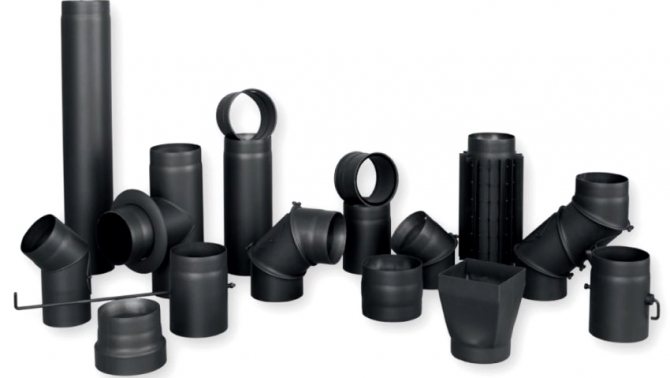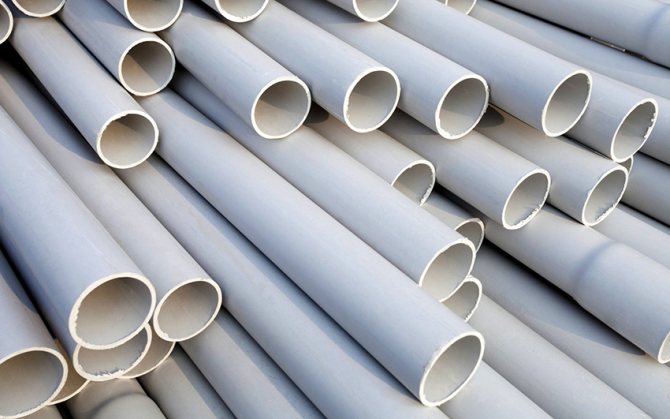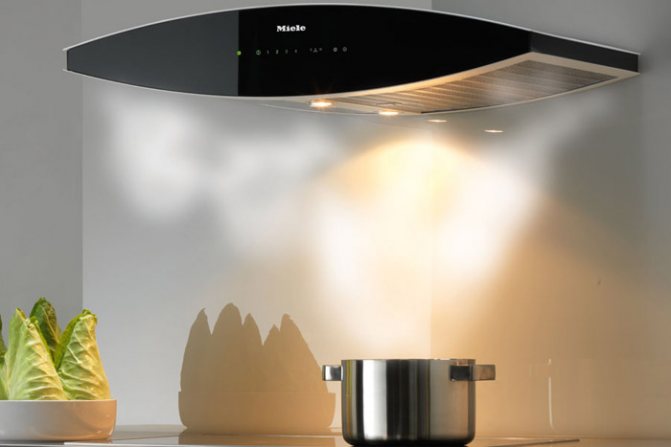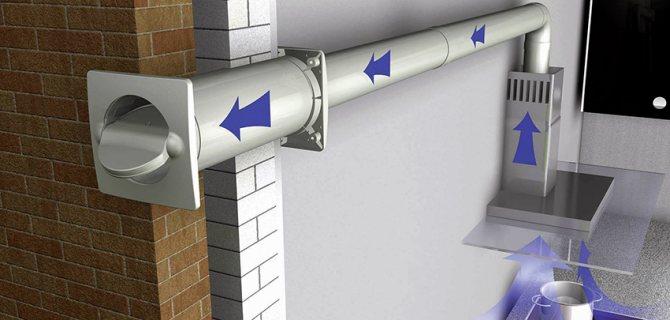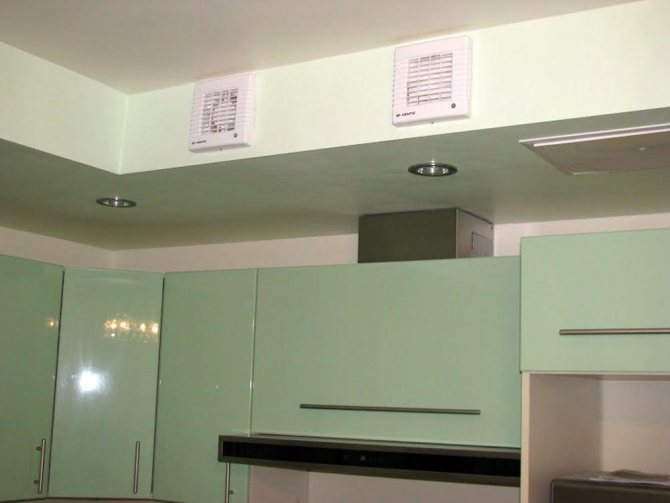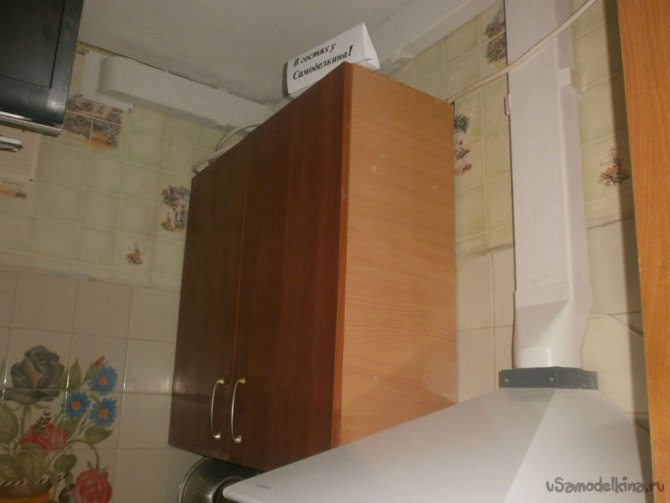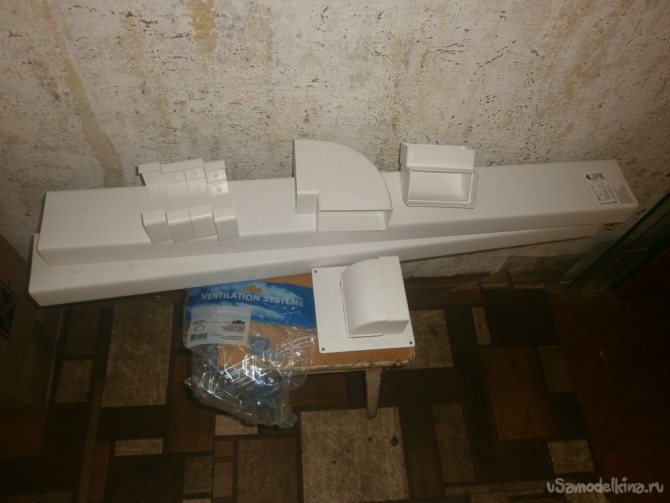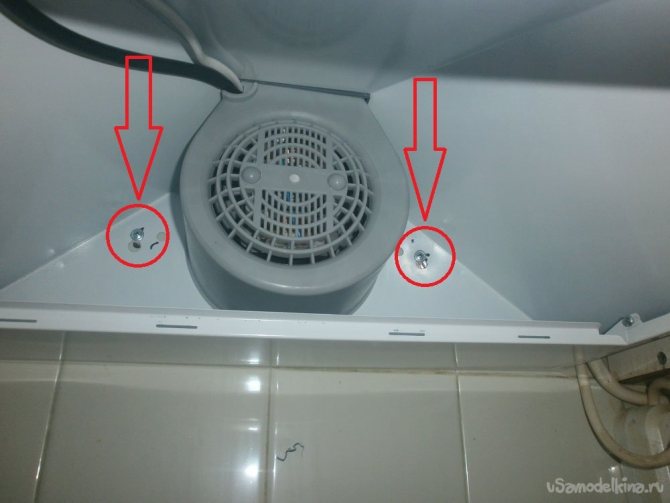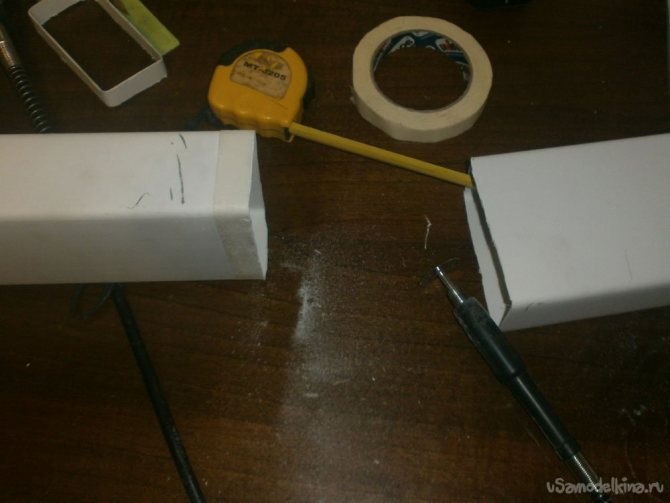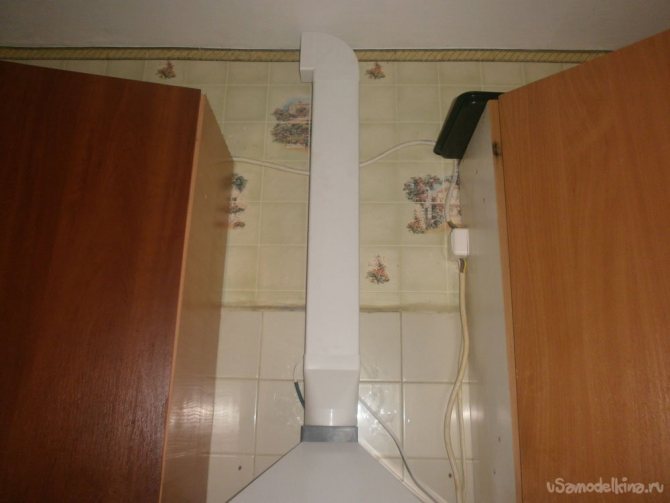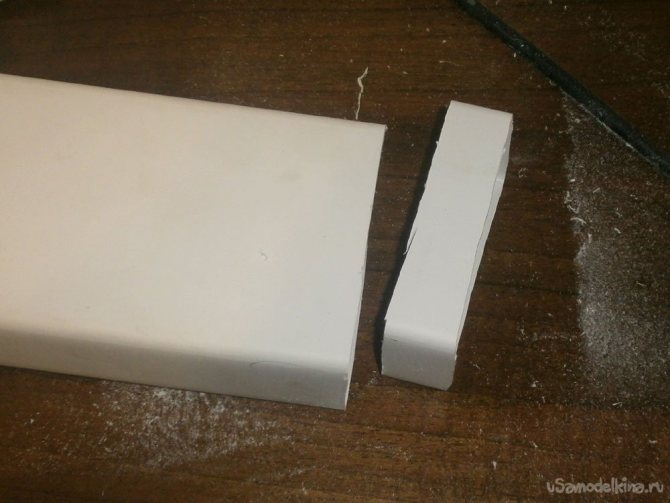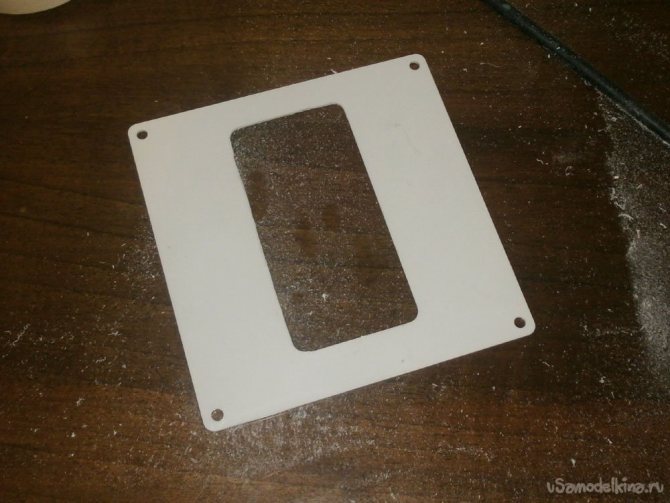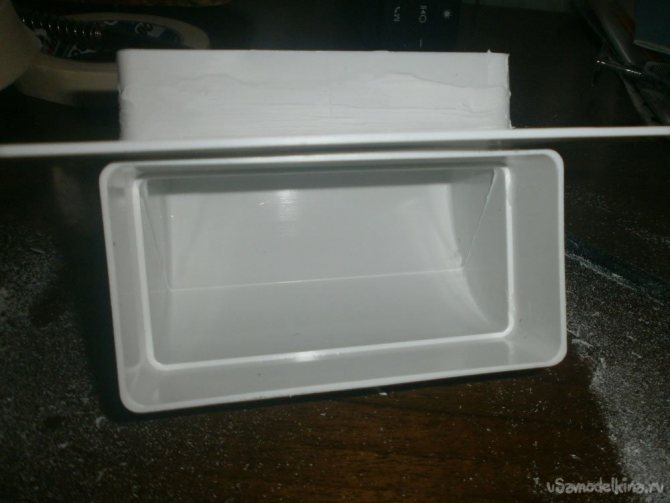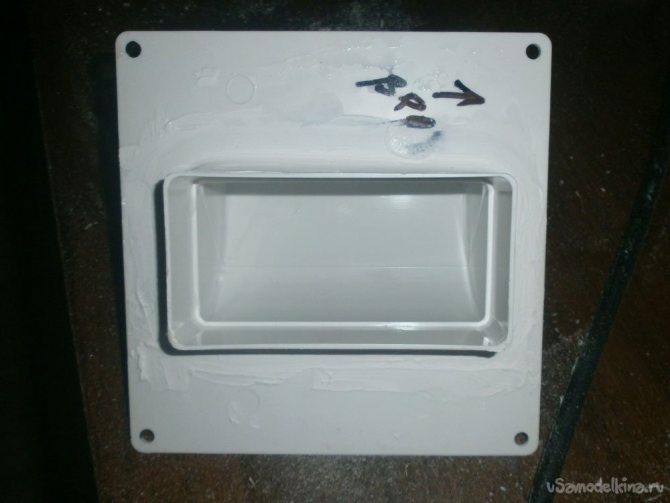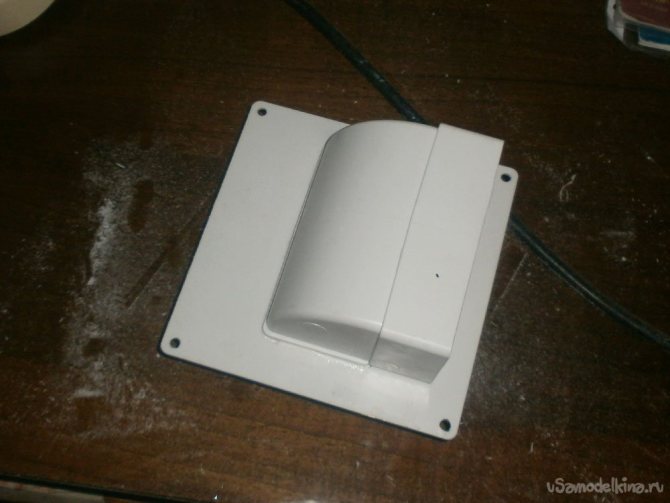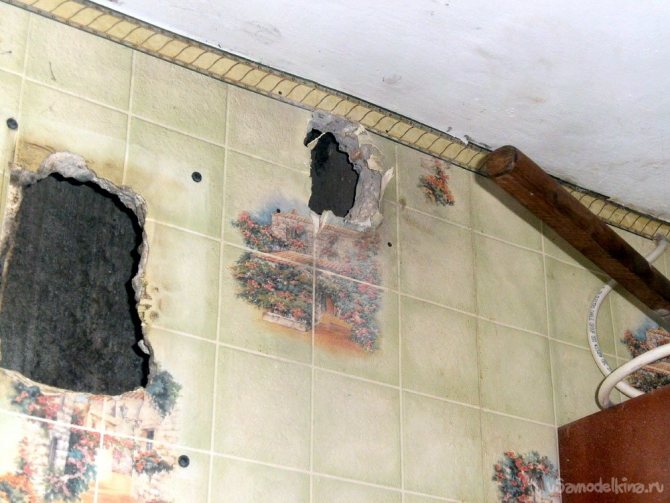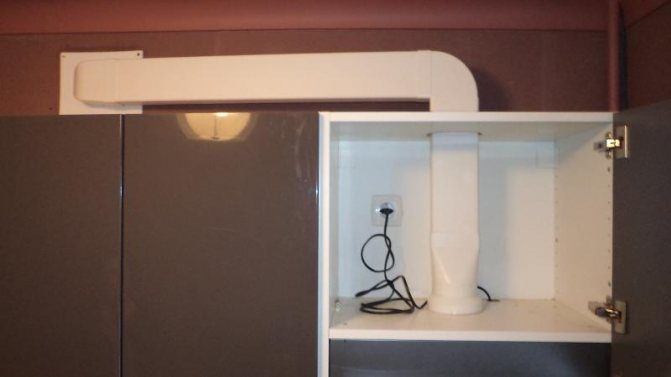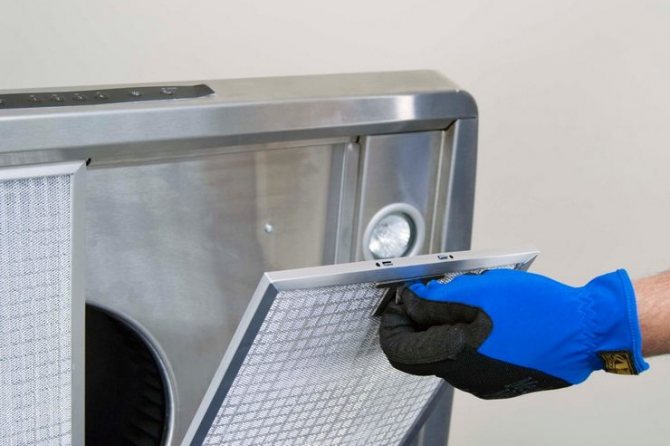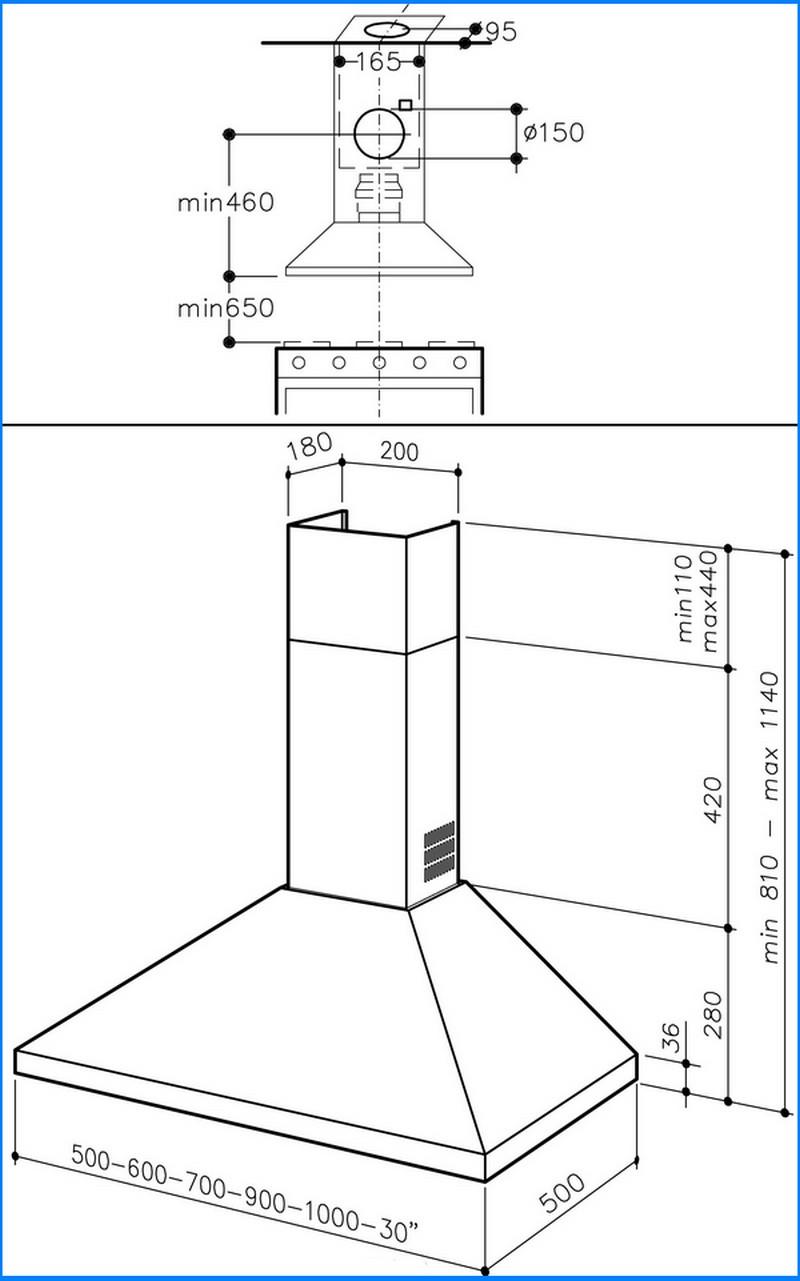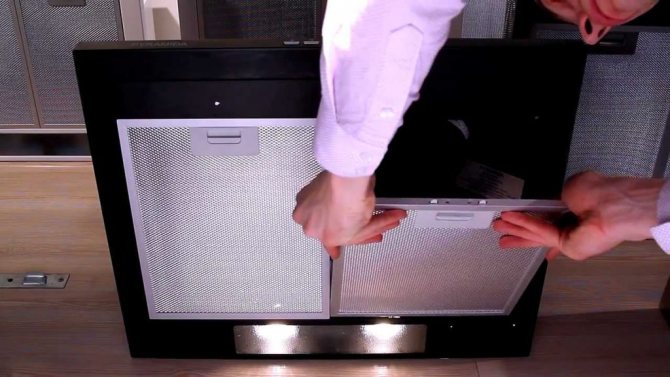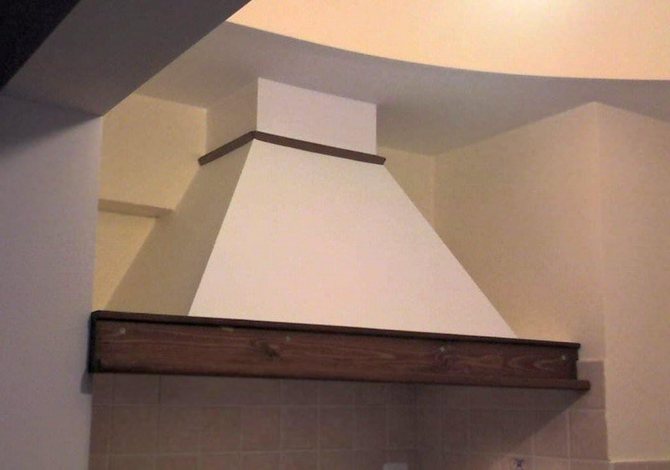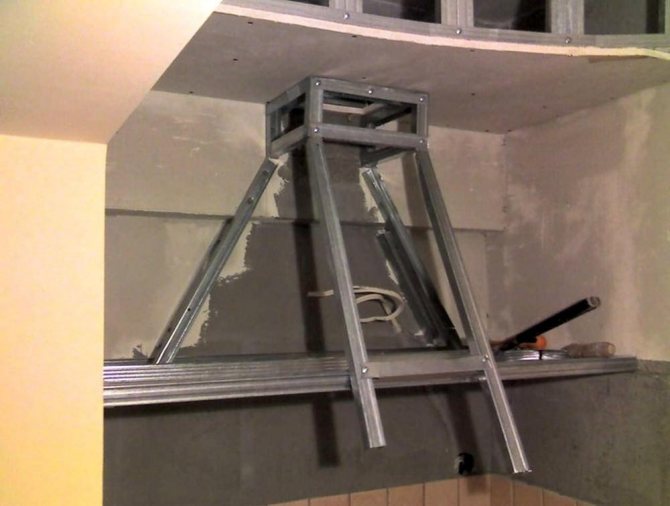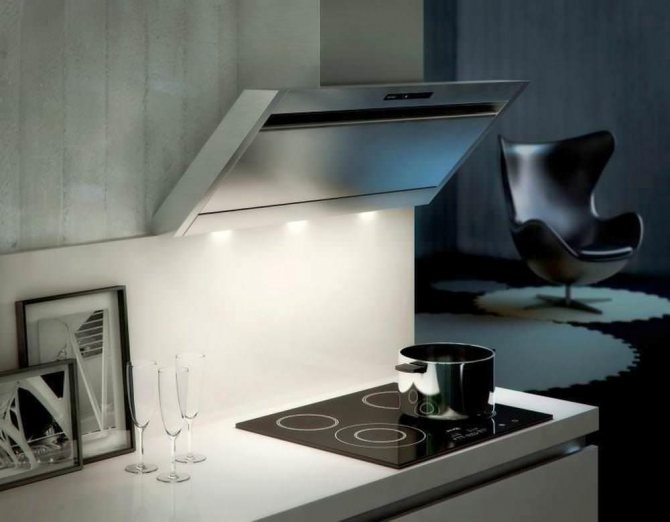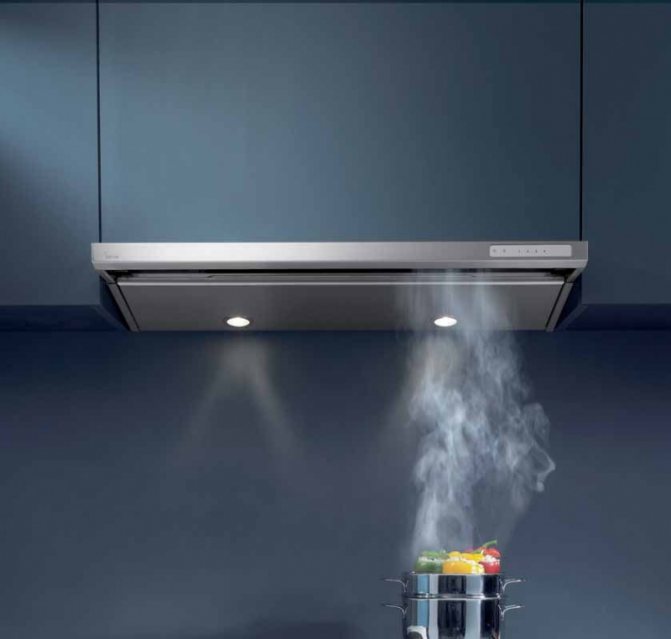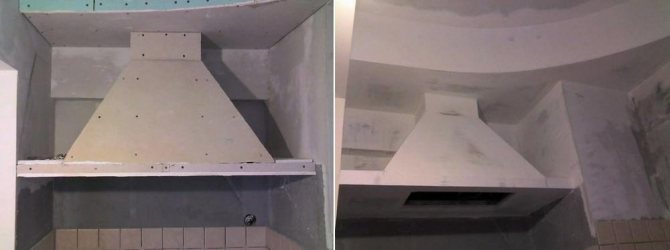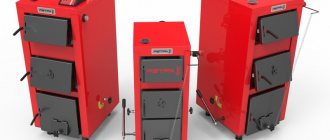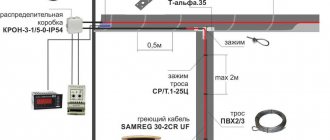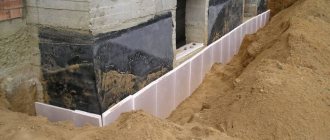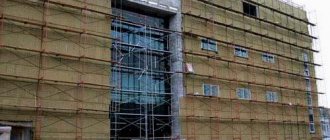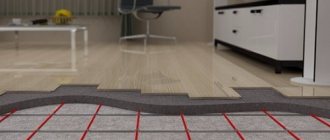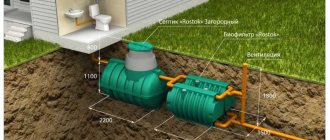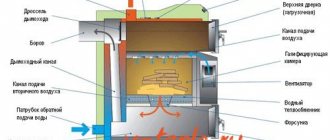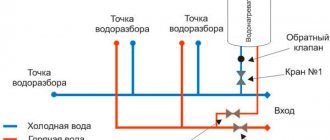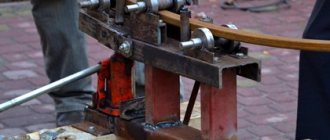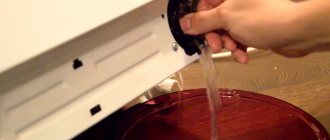Do-it-yourself kitchen hood: do it right
No modern kitchen is complete without an exhaust system. Odors and aerosols generated during the heat treatment of food do not have the best effect on the microclimate of the apartment. You can avoid this to some extent by opening windows in the kitchen and arranging a draft in the apartment, however, forced air circulation is preferable, as in any production.
Today, almost every hob is equipped with an exhaust ventilation, which is taken out into the general ventilation shaft. In principle, a do-it-yourself cooker hood is available to every skilled person. As the test shows, homemade designs are no worse than purchased ones.
Problem number 1: inflow does not work. How to check ventilation?
Ventilation is proportional air exchange.
The inlet acts on the hood, “pushing out” as much air as it has received.
But often the flow in our apartments is simply not enough. The reason is that in an effort to insulate their homes, almost all residents of apartment buildings install plastic double-glazed windows.
Windows with sealed frames, unlike wooden ones, do not allow air to pass through. They really allow to reduce noise from the street, prevent drafts, and look more aesthetically pleasing. But at the same time we are left without ventilation.
How can I check this? Try to open a window and attach a piece of newsprint or napkin to the ventilation grill. The leaf will be attracted. And if you close the window (that is, remove the inflow), the napkin will immediately fall to the floor.
That is, we provide an inflow = we start the hood.
However, keeping windows or vents constantly open is not the best solution, especially in the Ural climate. We simply launch a "piece of the street" into the apartment (with fresh air, but at the same time with cold, and at the same time with dust and with the noise of city streets).
Causes of malfunction of the kitchen hood
During operation, the hood is affected by several negative factors that can lead to its breakdown. The main factors include:
- Heat. Usually, the hood is installed relatively close to the stove, as a result of which it is constantly exposed to heated air and steam. Moreover, the latter usually contain impurities of fat. Modern models of hoods are equipped with protection systems against high temperatures. A special thermal insulation layer is provided inside the device body. The latter gradually deforms and crumbles, as a result of which the effectiveness of thermal insulation decreases. The working elements of the device begin to overheat, the plastic may deform, as a result of which a malfunction occurs.
- Excessive load. The drive and fan are movable structural elements subject to wear due to friction. With constant use of the hood at the maximum mode, the parts wear out faster.
- Contamination of surfaces and work items. Grease accumulates on the surface, which, due to the sticky structure, collects dust on itself. The suction holes are clogged, air circulation is disturbed.
There are other causes of malfunctions, for example, improper operation, power outages or the ingress of foreign objects.
How to solve the problem and let in fresh air without opening the windows?
If the reason for the inoperative ventilation is insufficient supply, then some kind of supply device will help. Today there are many of them.The simplest and cheapest is the KIV-125 or KPV-125 valve. These are often installed in modern new buildings.
However, such ventilation does not prevent heat loss - albeit not as significant as with open windows, but part of the heated air through the ventilation shaft will be "thrown" into the street. The apartment will become cooler.
Another option is ventilators (Tion breathers) - they also perform the inflow, besides, they well clean the air from dirt, dust, exhaust gases, and even heat it up.
But they also have a drawback - significant energy consumption (in heating mode) and effective operation only when the hood is running.
You can also install air handling units. They provide the entire apartment with fresh air. Optimal for large objects. Their main disadvantage is that they are installed before finishing work and can also consume a lot of energy.
But do not forget that all these devices will be effective only if the hood is in good working order!
Classification of ventilation pipes for exhaust
The modern market offers the widest selection of ventilation systems and accessories required for installation. At the same time, there is a certain classification of air ducts. Exhaust pipes in a private house or apartment, intended for household ventilation, are conventionally divided into the following groups:
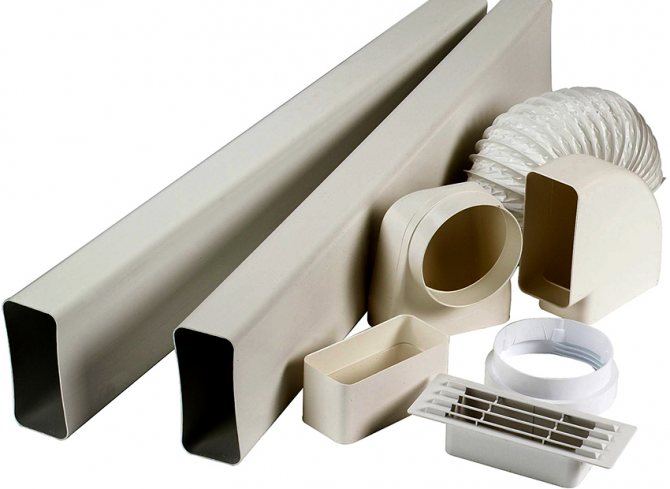
Ventilation pipes can be round, square and rectangular
- Depending on the material of manufacture, there can be aluminum, plastic pipes for ventilation, as well as made of galvanized steel.
- According to the shape of the duct, square, rectangular or round pipes are distinguished.
- Taking into account the degree of flexibility, two types of products are distinguished - flexible and rigid boxes.
Flexible air ducts are usually made of corrugated aluminum or galvanized steel. Now rigid pipes made of metal are not used, since their installation is quite complicated, like the manufacturing process itself. Such pipes should have a diameter of 100-150 mm. Aluminum products are much more expensive, although they do not have special qualities and advantages. Therefore, they are not used when installing a kitchen hood.
Plastic air ducts are round, square or rectangular. Their surface can be either rough or smooth. Most often they are white, although they are often painted in other colors, which makes it possible to choose a plastic air duct for a kitchen hood that will harmoniously fit into the interior.
We will talk in more detail about each specific type of air duct below, list their advantages and disadvantages, and also dwell on the installation features.
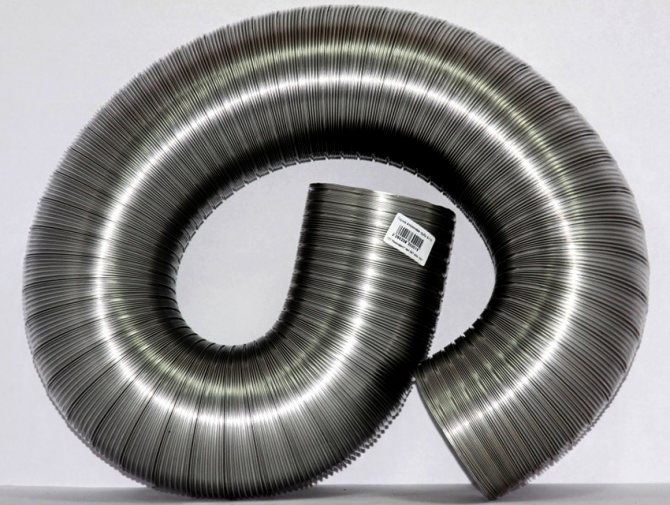

In addition, exhaust pipes can be rigid or flexible.
Helpful advice! Plastic ventilation pipes are considered the most practical, since they are easy to clean thanks to their smooth surface, and much less grease and soot collects inside. The smoothness of the walls also helps to reduce air resistance, resulting in less vibration and noise.
Materials for the manufacture of plastic ventilation pipes
Plastic pipes for hoods can be made of different types of material, the main ones are as follows:
- polyvinyl chloride;
- polyurethane;
- polypropylene;
- polyethylene.
The most practical and common are PVC pipes. Among the advantages should be highlighted ease, affordable price, ease of installation. In addition, they provide good strength and tightness to the plastic hood.
At the same time, it is worth noting certain restrictions on the use of these pipes. In particular, their use is not allowed at temperatures above 120 ° C, since when heated, toxic chlorine is released, which can cause irreparable harm to health.Pipes of this type can be installed in the kitchen, bathroom and toilet, but their installation in rooms with high temperatures, for example, in a sauna or in a room with a fireplace, is unacceptable.
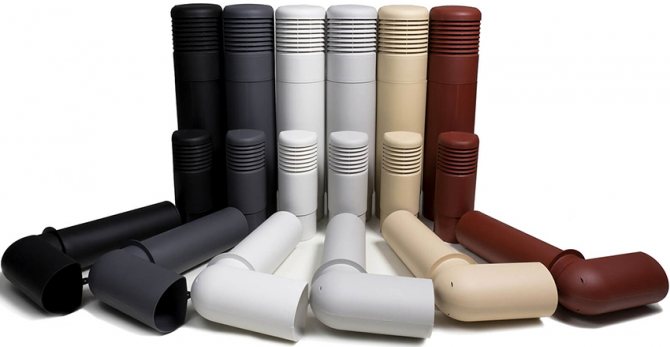

PVC pipes have an affordable cost and positive performance
At temperatures below 5 ° C, the effectiveness of pipes is lost, polyvinyl chloride becomes more fragile, so this material is not suitable for installation in premises that are intended for seasonal living.
Polypropylene is an excellent dielectric, has low hygroscopicity and high resistance to aggressive chemical environments. The plastic ventilation duct made of polypropylene is about 4 times stronger than HDPE pipes. However, it can be used at temperatures that do not exceed 90 ° C, with the exception of the fire-resistant model with flame retardant additives - PPS.
Polyurethane is similar in properties to PVC pipes, but it can withstand higher temperatures - up to 280 ° C. The most durable material for the manufacture of plastic pipes is vinyl urethane, which is reinforced with a steel spiral. It should be noted that with proper operation, plastic pipes will last more than 10 years.
Metal air ducts and corrugations for hoods
Among the metal pipes for hoods, the most popular are aluminum corrugations for ventilation with a circular cross section. They are practical and easy to install, as they can take almost any shape. No turning parts are required for installation, just bend the pipe. In addition, aluminum air ducts are durable.
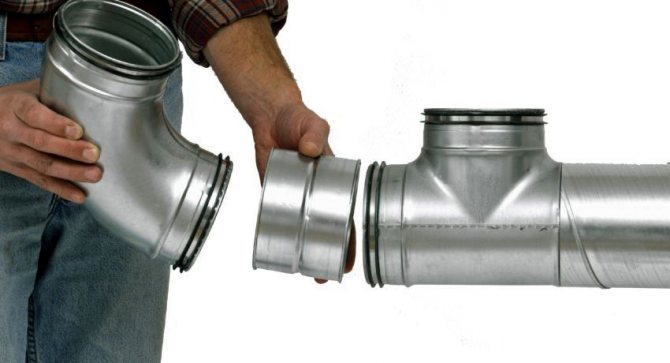

Metal ventilation pipes are easy to install
The main disadvantage is that, due to the corrugated surface, it is problematic to remove settled fat and soot from them. In addition, the corrugation creates a certain resistance to air, which leads to the formation of additional noise.
The corrugation of the hood can be made of galvanized steel. These pipes are stiff and strong, and easy to install (like aluminum corrugation), but the stiffness makes the process a little more difficult. At the same time, it should be noted that in places where zinc spraying is damaged, the pipe corrodes.
Helpful advice! Corrugation made of aluminum is considered more plastic, since it can be easily bent, stretched or squeezed. It is this type of duct that is recommended for use in places with turns and drops.
Aluminum and galvanized metal air ducts have common advantages:
- no additional adapters and corners are needed for installation;
- it is smooth bends, not sharp bends, that increase ventilation efficiency;
- the ability to stretch and shrink greatly simplifies the installation process;
- low cost.
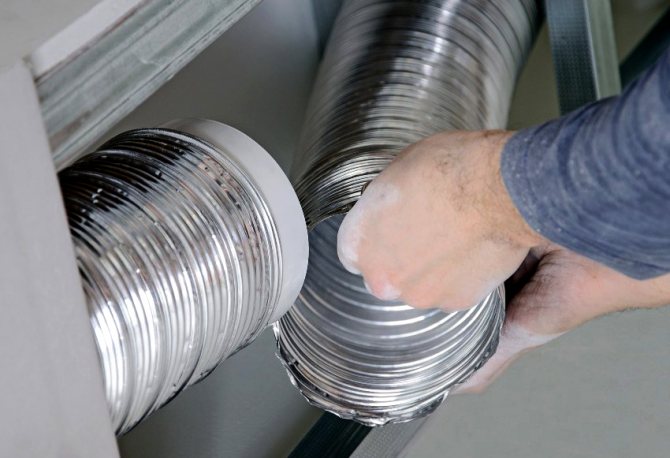

Aluminum corrugations are the most popular mounting option
Problem number 2: the hood does not work.
If the ventilation duct is not blocked, and exhaust ventilation is still not carried out (the napkin falls even with open windows, without being attracted to the ventilation grill), the reasons may be:
- blockage of the ventilation shaft (to eliminate it, you must contact the management company),
- damage to ventilation by one of the neighbors, for example, during repairs (this is also diagnosed by housing offices),
- installation in an apartment on the floor above or below equipment that carries out forced exhaust through a natural ventilation duct. For example, a powerful fan, cooker hood, etc.
In this case, the exhaust air from the neighbors is drawn out well (with a sufficient amount of inflow). But the air flow becomes so fast that it creates an air damper and prevents exhaust from other apartments.
How to properly install a hood in the kitchen for all types of pipes: general recommendations
First of all, it is necessary to ensure thorough sealing of joints in all possible joints of the pipe and transition parts. In this case, the number of adapters should be minimal, as well as the number of turns and contractions. All these factors lead to a decrease in the efficiency of the hood.
The box must be securely fastened to the wall and ceiling. For this purpose, special clamps are used. If the air duct is movable, then vibration will occur in the system, which will lead to an increase in the noise level and a violation of the sealing.
In order to find out how to properly install the hood, first of all, you should study the rules for installing the duct, that is, laying the pipe from the hood to the opening of the ventilation shaft. To do this, you must choose the shortest possible path. In the case when the length of the structure exceeds 3 m, it is worth considering another version of the air outlet, for example, directly to the street.
The system itself should consist of a minimum number of turns, since each turn of the box by 90 ° reduces the efficiency of the hood by about 10%. Such losses can be avoided by organizing a smooth pipe rotation using two 135 ° bends or bends with different angles.
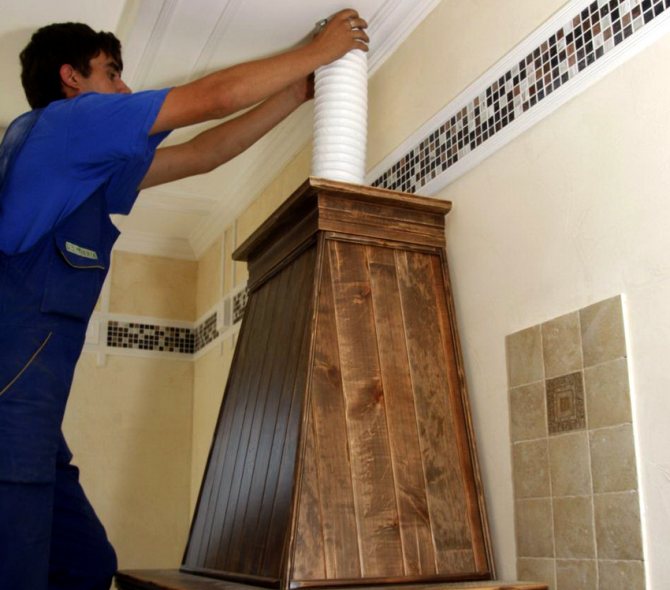

The most important thing is to carefully seal all joints.
Important! In no case should the duct turn at an acute angle - such an incorrect step will lead to a complete stop of air movement in the pipeline.
In the event that the length of the duct is too long, it is better to resort to the help of specialists who will help to calculate the expected power losses in the pipe and the required fan power.
How to lay a plastic ventilation duct with your own hands
The very process of installing the air outlet pipes from the hood to the ventilation duct is a simple task, so it can be done independently, without having some experience. To do this, just follow the tips below. First, you need to prepare tools and materials, which should include:
- box;
- corners, adapters of a certain section;
- bends;
- return valve;
- lattice for connecting ducts to the ventilation shaft;
- drill;
- hacksaw;
- Bulgarian;
- screwdriver;
- sealant.
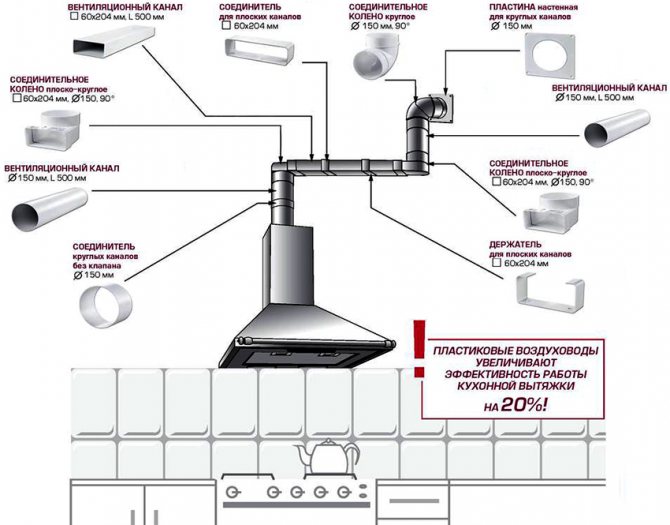

Detailed diagram of the assembly of the plastic duct for the hood
In order to install an indoor cooker hood duct, the complete air path must be carefully measured. The grate located at the entrance to the mine must be dismantled. The channel itself must be cleaned of dust, burning and cobwebs. After installing the hood, it is necessary to connect the duct to the branch pipe of the exhaust equipment. In this case, all joints should be greased with a sealant. In this case, a heat-resistant agent is not needed, since the temperature of the air that is removed is low.
Next, the system is sequentially installed. To do this, one element is inserted alternately into another, and the pipes are shortened to the required size, cutting off the remains with a grinder or a hacksaw. Then the box is fixed to the wall using special fasteners or clamps. The distance between them should not exceed 500 mm.
The lattice is installed on the shaft wall using dowels. A lattice with a hole for a pipe and for natural ventilation is considered more practical. The system should also be equipped with a non-return valve, which will prevent air from the ventilation shaft back into the room if the hood fails.
System testing, pipe insulation and hood masking
The system needs to be tested before use. If a leak is found, the defective areas are lubricated with a sealant.In case of rattling at the points of contact of the duct with other structures, place a gasket made of expanded polystyrene or polyethylene foam.
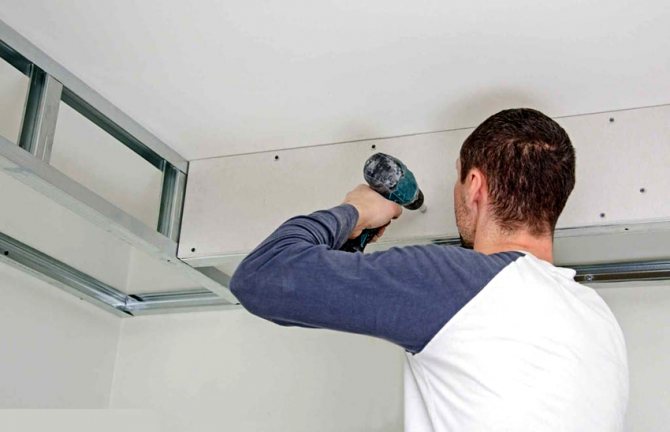

There are many interesting ways to camouflage duct pipes.
If the system is installed in the attic, then it is necessary to insulate the ventilation pipe. It is also necessary to exclude the possibility of water entering the air duct, as this will lead to a rapid failure of the fan. Thermal insulation will help to avoid such consequences. For this purpose, it is sufficient to use boards made of foamed polyurethane foam or mineral wool. A layer of insulation should be covered with roofing material or fiberglass, securing everything with wire.
Helpful advice! For an effective installation of the air duct, it is necessary to use only industrial pipes, adapters and adapters for the exhaust duct. The modern market offers a wide selection of these products both for round hoods and for square and rectangular boxes.
In order to mask the air duct, you can use different methods:
- decorative screen;
- imitation kitchen hanging cabinet;
- stitching a structure into a suspended ceiling;
- painting or decorating pipes to match the walls and ceiling;
- installation of decorative boxes.
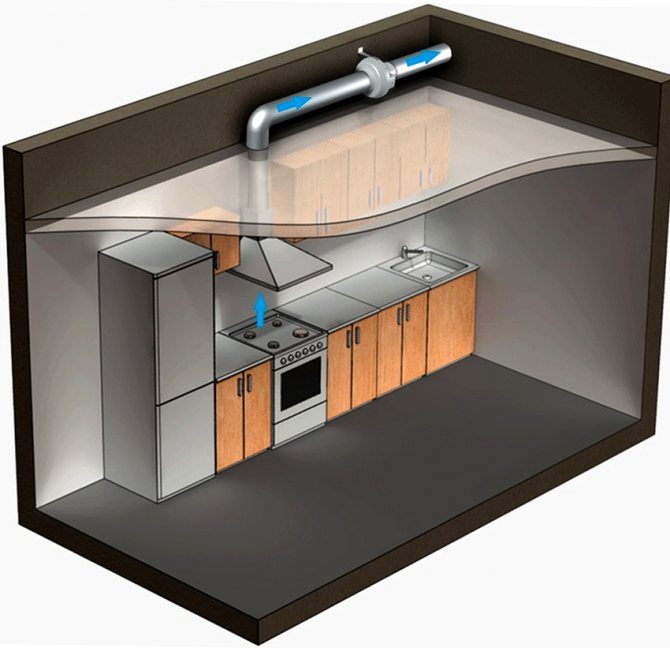

Exhaust pipes can be placed above the stretch ceiling
Masking with a screen that simulates a wall is the most popular and budget option. For this, you can use a simple drywall. In the case of installing boxes behind a false wall or under a false ceiling, it is necessary to take into account the fact that it will be problematic to disassemble the structure in the future.
How to properly make a hood in the kitchen without a box and other ways to organize an air duct
Circulating hoods constitute a special category. They are more compact and easier to install as they do not require duct installation. The hood without pipes is simply fixed on the wall or fixed to the ceiling if the stove is located in the middle of the kitchen.
In addition to the traditional method of diverting the air duct into the ventilation duct, as well as installing hoods without pipes, there are other options for air exhaust. You can connect one or two air outlet points to the duct at the same time, or simply bring the pipe outside. Whichever method you choose, the main thing is that general ventilation is installed in the kitchen.
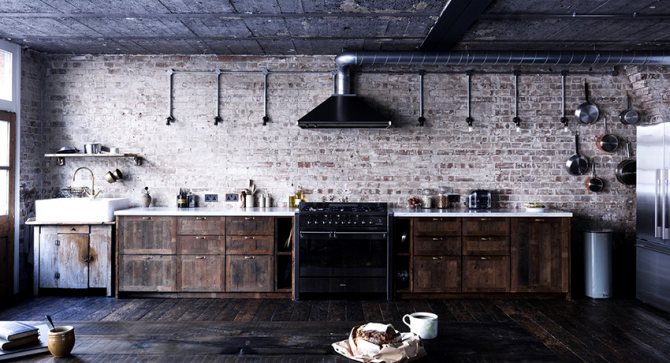

If the kitchen is made in the loft style, then the air duct can become part of the interior and does not need masking
If you plan to install one intake point, then when connected to the ventilation system, it should be possible for natural ventilation to function. If there are two ventilation ducts in the kitchen, then it is necessary to connect the hood to one of them, and leave a passage in the other shaft for natural air exchange.
When there is only one mine, a tee is mounted at the inlet of the exhaust pipe to the ventilation shaft with the option of switching between a forced exhaust system and natural ventilation. If you need to connect two air intakes at once to one ventilation system, then check valves must be installed between the tee and the fans. Otherwise, the fans will simply interfere with each other's work.
In the efficiency of the ventilation system in the kitchen, a significant role is played by the hood itself, the methods of air removal, as well as the air duct. When choosing pipes for exhaust, it is necessary to take into account the material of manufacture, their shape and dimensions of the ventilation duct. If everything is selected correctly, then, following the advice given in the article, you can easily independently connect the hood in the kitchen.
The message Pipes for hoods: the nuances of selection and installation features first appeared on Remoo.RU.
https://remoo.ru/materialy/truby-dlya-vytyazhek
Share the news on social networks
- Similar posts
- Recommendations for the selection and application of paint for walls and ceilings
- Floor tiles for the kitchen: photos and prices of popular types
- Infrared sauna: benefits and harms, features of use and recommendations
«Previous post
How to solve the problem and provide exhaust ventilation?
Ask the management company to check the operation of the exhaust duct, if necessary, clean it. If these measures did not help to achieve the desired effect, you can install an exhaust fan or other device in the ventilation duct.
However, it is also important to bear in mind here that a single hood without supply is not enough.
In addition, the amount of supply and extract air must be balanced.
And finally, it is important to harm your neighbors by blocking the ventilation duct with your hood! Installing a device that is too powerful or that works 24 hours a day is justified only on the upper floors.
It is also important to remember that the more intensively the hood works, the faster the inflow comes in, and the colder it gets in the apartment. The air may not even have time to get polluted - it will fly away so rapidly.
Checking the hood operation
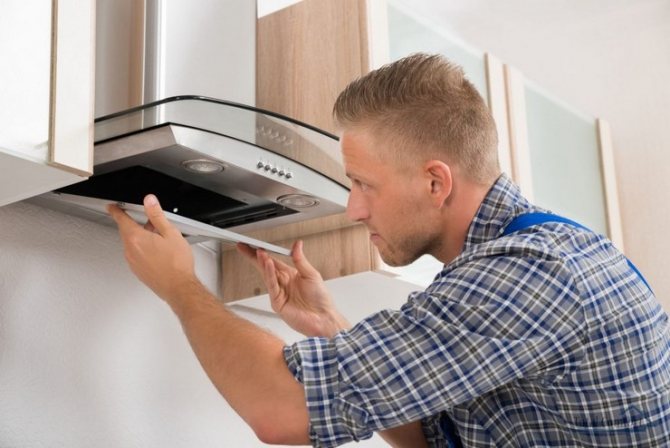

The following symptoms may indicate a device malfunction:
- The device does not turn on. In most cases, this is due to a lack of power supply.
- The unit is operating normally, but it is not sucking in air. As a rule, this is caused by grease and / or dust contamination of the grill through which air is sucked in.
- Extraneous noises during operation: knocking, grinding, uneven sound from the fan, squeaks. This malfunction is directly related to the operation of the motor and fan.
Note! If during the operation of the hood in the room there are smells from cooking, this does not always indicate a malfunction. This is usually due to improper use of the device. It should be turned on 2-3 minutes before the start of cooking, and turned off a few minutes after the end of cooking.
How to solve both problems (both insufficient air supply and poor exhaust)?
You can do without a ventilation duct, and without vents. In this case, we will "lock up" all the heat in the apartment. The penetration of foreign odors is limited. And the air will be renewed with the help of special supply and exhaust ventilation devices.
They will keep the air warm in winter or cool in summer. And at the same time they will provide effective air exchange in your home. Options for such devices:
1) that do not require air ducts (decentralized) - for example, a ventilation valve with a recuperator. Two valves, working in pair, provide supply and exhaust.
2) centralized - ventilation units with a rotary recuperator. They are carried out along one air duct - the inflow, on the other - the exhaust. They take exhaust air from the kitchen, bathroom, bathroom, and supply fresh and clean fresh air to the living rooms.
Both those and other devices retain heat from the hood, and then transfer it to the inflow, thanks to the heat exchanger plates.
There is only one drawback of this method - if there is a power outage, you can be left without ventilation. Exit - install an uninterruptible power supply.
With high-quality ventilation with reliable filters, the air in the apartment will be as fresh and clean as if you live outside the city or in the forest. You no longer have to open neither windows nor vents.
You can ask your questions and get expert advice by phone. We supply equipment, design and install ventilation in Yekaterinburg and Chelyabinsk (as well as in the region). We provide discounts. Detailed information - in the offices of the group and by phone.
Video:
The group of companies Terkont copying without link to https://terkont.ru is prohibited
The use of ventilation pipes for hoods in the kitchen
The key to a beautiful and cozy kitchen is its impeccable cleanliness. Regular cleaning and clean air are important.Ordinary ventilation is not enough here, as during cooking, moisture and combustion elements are released, which are deposited on the walls, ceiling, floor and furniture. A ventilation hood will help to solve this problem to a large extent. This appliance requires proper installation, especially at the connection to the ventilation duct. By choosing the right pipe for the hood, it will be possible to significantly increase the ventilation efficiency.
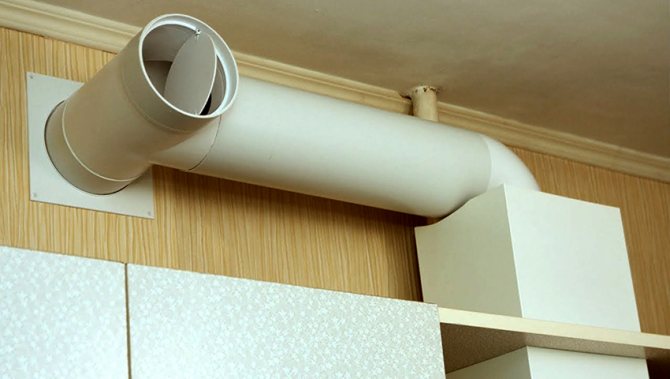

Correctly selected and installed chimney increases the efficiency of the kitchen hood
Any residential building must be equipped with an extractor hood. This is the most important condition not only for comfortable, but also safe living, since people themselves, when breathing, emit carbon dioxide and moisture. In addition, decomposition products such as soot, grease, gases and moisture appear during cooking.
As a result, moisture settles on furniture and walls, forming mold, fumes and soot, which contaminate surfaces, and combustion elements such as carbon dioxide lead to fatigue, irritability of the respiratory system, deterioration of well-being and decreased performance. Frying carcinogens can cause food poisoning. That is why it is important to install a hood, the efficiency of which is largely influenced by correctly selected pipes.
Evolution and development of air ducts for kitchen hoods
In the high-rise buildings built during the Soviet era, the apartments had a small area. Ventilation in such rooms took not only harmful substances from the kitchen and bathroom, but also air from living rooms. The ventilation ducts were then built directly into the walls of buildings. In the houses of individual buildings, ventilation was not provided at all, and an ordinary chimney built into a home stove saved residents from the harmful effects of carbon dioxide. The products of fuel combustion and decay elements formed during cooking escaped there.
Helpful advice! Before purchasing a hood and ventilation pipes, it is necessary to study the ventilation or exhaust system itself, which is provided for by the building structure. This is an important factor contributing to the efficiency of room air purification.
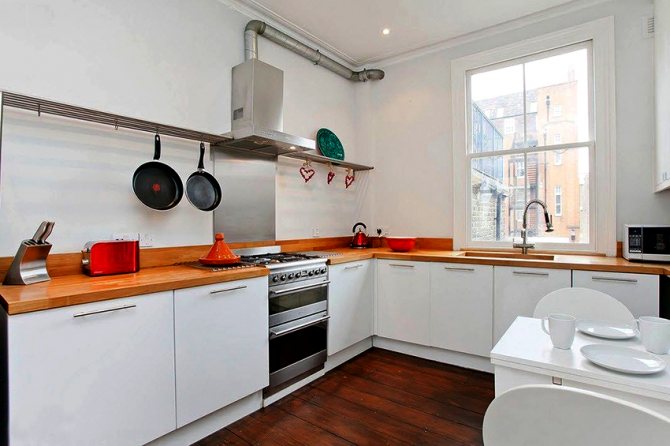

As a rule, the exhaust duct is not enough, therefore, an extractor hood with an air duct is additionally installed.
Fresh air entered old houses and apartments mainly through loose doors and windows, and carbon deposits and soot gradually accumulated on the walls and ceiling, so whitewashing was required every year. In some apartments, ventilation ducts were provided - prototypes of kitchen hoods, the same ventilation was installed in bathrooms and toilets.
In modern apartments, in addition to the hood, an additional ventilation system is installed. It can be exhaust and supply and exhaust. In energy-efficient houses, the installation of a supply and exhaust system with heat recovery is a prerequisite.
General recommendations for maintaining the hood in good condition
In order to encounter various repairs as rarely as possible, you must follow the simple rules for using the hood in the kitchen. These include:
- control the timely replacement of all filters and carefully monitor their condition;
- the equipment can be installed at a height of 65 to 70 cm from the hob;

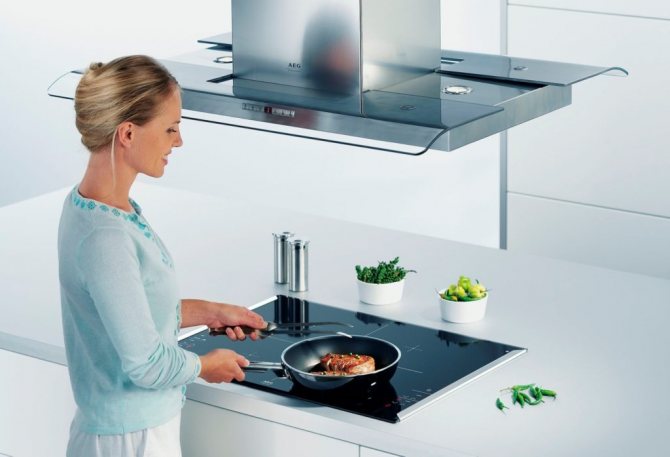
- periodically check the motor of the product for the presence of grease. Clean it if necessary.
If you follow these simple recommendations, then this guarantees the correct operation of the device over a long period of time.

